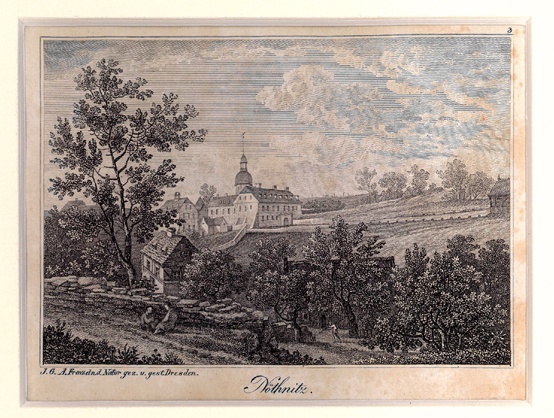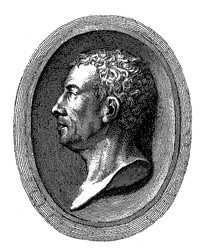Der Stich von Johann Gottfried Abraham Frenzel (1782-1855) erÃķffnet einen Blick Þber BÃĪume und Þber ein bÃĪuerliches Anwesen hin zu dem Schloss NÃķthnitz.
Anfang September 1748 trat Winckelmann seinen Dienst bei Heinrich Graf von BÞnau auf Schloss NÃķthenitz an. Das Schloss wird fÞr fast sechs Jahre seine neue Heimat. Frenzel dokumentiert weitgehend den baulichen Zustand der Zeit, als Winckelmann dort lebte. Im Vordergrund ist das seinerzeit zum Rittergut gehÃķrende Dorf Rosenitz wiedergegeben.
Sign.: J.G.A. Frenzel a.d. Natur gez. u. gest. Dresden
en

